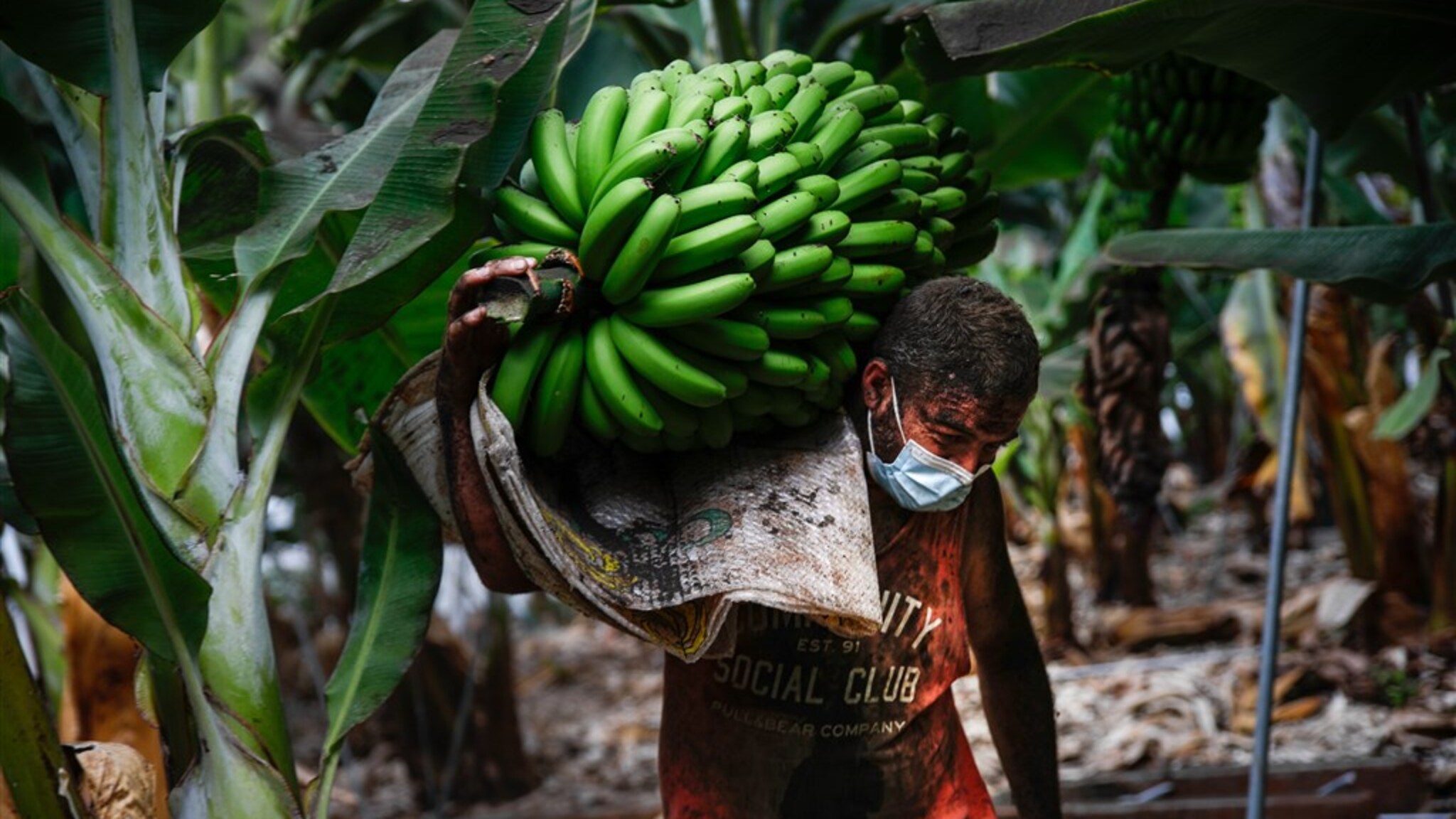“The leaves and fruits of my plants are full of ashes,” banana grower Hilario Batista said by phone from his home in La Palma. Although his banana plantations are not in the way of the boiling hot lava flow that reached the sea on Wednesday, he still saw a good portion of his crop fall into the water. “The fruits were destroyed by the ash rain. I have already swept 30 kilograms of ash from my roof.”
Impossible to go every day
“We try to harvest as much as possible. But for safety reasons, we are not always allowed to go to the farms. Yesterday the lava swallowed another field,” says Elisa Martinez of the Europlatano banana company, which has fields in the area affected by the lava flow.
Farmers whose farms still exist are often unable to take care of bananas as well. “Usually we go every day, but that is now impossible because of the barriers,” Martinez says.
Banana Island
Known as La Isla Bonita, La Palma is the beautiful island, but it is also known as Banana Island. Because after Tenerife, La Palma has the largest area of banana plantations of all the Canary Islands, so half of the economy on the island operates on this “yellow gold”, and thirty percent of jobs are linked to the sector.
The eruption of the Cumbre Vieja volcano has severely affected banana cultivation: 1,200 of the nearly 3,000 hectares of banana plantations in La Palma have been damaged, says the Canarian Association of Asprocan Banana Producers, which estimates the initial damage at 72 million euros.
Volcanic ash destroys bananas
“If the volcano continues to erupt and the lava flow expands, or if a branch develops, the damage will only increase. Every day counts,” said Manuel Redondo, a spokesperson for the Canary Agriculture and Livestock Association.
The real plague now is jet-black volcanic ash on banana plants, because you can’t just wash it off, according to Redondo. “The fruit is very fragile. If ash gets into it, the fruit often breaks when cleaning. You can see that when the banana is ripe. The ash acts as a kind of knife.”
Call in Spain
According to Redondo, the lava flow passes through one of the most important banana regions of La Palma. Bananas are usually kept in plastic greenhouses. If fires — and the pesticides stored there — catch on, toxic clouds can form.
Most canary bananas are sold on the Spanish mainland. A social media action has been launched to encourage Spaniards to buy canary bananas in order to support affected farmers in La Palma.
Spain has declared La Palma a disaster area and is now allocating more than 10 million euros to help the island’s residents. Six thousand of them were evacuated and more than eight hundred homes were destroyed as a result of the volcanic eruption.

Zombie specialist. Friendly twitter guru. Internet buff. Organizer. Coffee trailblazer. Lifelong problem solver. Certified travel enthusiast. Alcohol geek.

